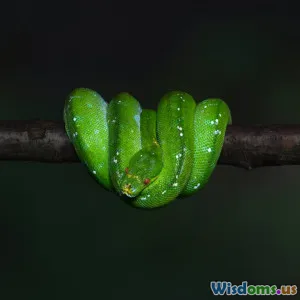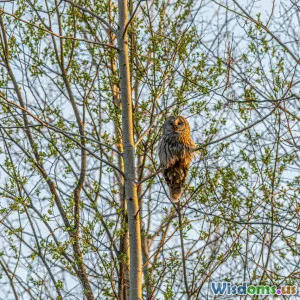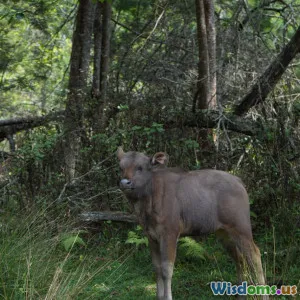
Should We Worry About Invasive Snakes Disrupting US Ecosystems?
9 min read Exploring the ecological threats invasive snakes pose to US habitats and what can be done to protect native wildlife and ecosystems. (0 Reviews)
Should We Worry About Invasive Snakes Disrupting US Ecosystems?
In sections of the United States, invasive snake species are no longer just an isolated curiosity; they represent a significant, growing threat to native ecosystems and biodiversity. From the murky waters of the Florida Everglades to other vulnerable habitats, these non-native reptiles challenge the balance of native wildlife through predation, competition, and disease transmission. But what exactly is the scope of this issue? And given the scale of American natural landscapes, should we be deeply concerned?
Introduction
Invasive species are organisms introduced—intentionally or accidentally—into regions outside their native ranges where they cause harm to the environment, economy, or human health. Among these, invasive snakes have surged in public awareness, particularly with the proliferation of species such as the Burmese python (Python bivittatus) in Florida.
Animal enthusiasts, conservationists, and scientists alike have observed the rapid ecological shifts tied to these serpents, raising alarm about long-term consequences. This article explores why invasive snakes should matter to all Americans, delves into their impacts on natural ecosystems, investigates management challenges, and encourages informed responses.
The Rise of Invasive Snakes in the US
Burmese Pythons in Florida: A Case Study
The introduction of the Burmese python to Florida’s Everglades is perhaps the most well-documented example of invasive snake establishment in the US. These pythons, native to Southeast Asia, likely found their way into Florida’s subtropical wetlands due to escaping or being released pets, especially following Hurricane Andrew in 1992 which damaged breeding facilities.
Adult pythons can exceed 18 feet in length and weigh over 150 pounds, making them formidable predators. You might envision a daunting apex predator—but their success in the Everglades goes beyond mere size. Researchers from the University of Florida estimate an elusive population numbering in the thousands.^[Dorcas, M. E., et al. (2012). Severe mammal declines coincide with proliferation of invasive Burmese pythons in Everglades National Park. Proceedings of the National Academy of Sciences, 109(7), 2418–2422.]
Spread Beyond Florida
While the Burmese python dominates most invasion discussions, other species, such as the brown tree snake (Boiga irregularis) in Guam, offer a cautionary tale about threats to island ecosystems. Though primarily outside continental US reports, they exemplify the potential long-term devastation invasive snakes can wreak when unchecked.
Ecological Impacts of Invasive Snakes
Predation and Decline of Native Species
The most immediate and documented effect of invasive snakes is their voracious predation on native fauna. Burmese pythons consume a wide variety of animals, including raccoons, birds, rabbits, and even alligators. Their constricting method of hunting leaves little chance for escape or survival for native wildlife confronted with these new predators.
A landmark study published in 2012 revealed staggering declines: populations of raccoons shrank by 99.3%, bobwhite quail by 88.5%, and cottontail rabbits by 87.5% within python-infested areas of the Everglades compared to non-infested ones.
Disruption of Food Webs
The sudden removal or reduction of these mid-sized mammals and birds perturbs food webs. Predators such as panthers and coyotes experience indirect consequences as their prey declines, while scavengers and decomposers adapt dynamically to changing carrion availability.
Moreover, the altered prey composition can influence plant communities through trophic cascades—for instance, changes in herbivore populations may affect seed dispersal and vegetation dynamics.
Competition with Native Predators
Invasive snakes compete directly with native predators including alligators, king snakes, and raptors. This competition for food resources may pressure native predators, especially as invasive snakes are efficient and opportunistic hunters.
Disease Transmission Risks
While less studied, invasive snakes have the potential to introduce or amplify disease vectors that affect native wildlife. Their presence increases the complexity of ecological networks and could pave the way for new disease dynamics.
Human and Economic Concerns
Beyond ecological consequences, invasive snakes pose risks to humans and local economies. Attacks and bites are rare but possible, while fears about venomous or large constricting snakes contribute to public unease.
Economically, damage occurs through impacts on hunting and ecotourism industries that rely on intact wildlife populations. The cost of managing invasive snake populations—ranging from coordination, research, removal programs, and public education—is also substantial.
Challenges in Controlling Invasive Snakes
Detection Difficulties
Snakes are cryptic, elusive animals. They hide in dense marsh vegetation, making early detection and monitoring extremely difficult. Traditional wildlife survey methods see limited success.
Removal Efforts and Innovation
Agencies employ techniques such as traps, trained detection dogs, and even snake-specific radio telemetry to locate and capture invasive snakes. For example, the Florida Python Challenge is an annual event inviting the public to aid in the removal of these pythons, incentivizing population control.
Nonetheless, these initiatives have only localized effects due to the snakes’ reproductive rates and vast potential habitat.
Research on Biological and Genetic Controls
Emerging studies explore genetic techniques such as gene drives to reduce python reproduction or viability. While promising, these technologies raise ecological and ethical concerns that require thorough vetting.
What Can Be Done? Coordinated Action and Awareness
Supporting Science and Funding
Sustained funding for invasive species research and management is critical. Understanding python ecology, behavior, reproductive cycles, and dispersal help inform control strategies.
Strengthening Biosecurity and Pet Trade Regulation
Preventing new introductions relies on stringent controls over the exotic pet trade, which remains a primary entry point for invasive snakes. Enhanced inspection, quarantine measures, and public education reduce risk.
Community Engagement and Educational Campaigns
Raising awareness about the consequences of releasing pet snakes into the wild is vital. Community science programs enable public participation in monitoring and reporting sightings.
Conservation and Habitat Management
Improving the resilience of native ecosystems through habitat restoration enables stronger native wildlife to withstand invasive predator pressure.
Conclusion
The invasion of non-native snake species in US ecosystems exemplifies the complex challenges posed by global species movements in an era of rapid environmental change. Burmese pythons in the Everglades demonstrate that such invaders can reshape food webs, threaten native biodiversity, and impact economies and human wellbeing.
While the problem is daunting, coordinated science-based management, public participation, and regulatory vigilance can mitigate risks. The stakes are high—not just for the snakes or their prey—but for the overall health of America's natural heritage.
Understanding, respect, and timely action remain essential if we hope to safeguard ecosystems balanced over millennia from disruption by these serpentine interlopers.
Rate the Post
User Reviews
Popular Posts



















